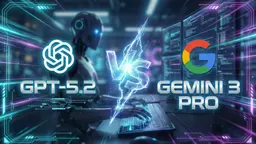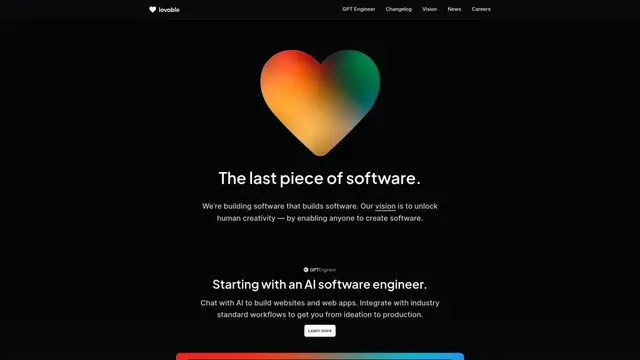Aeneas
Aeneas is a groundbreaking AI model developed by Google DeepMind that helps historians interpret, restore, and contextualize ancient Latin inscriptions by identifying textual parallels and patterns across thousands of historical texts.
https://deepmind.google/discover/blog/aeneas-transforms-how-historians-connect-the-past?ref=producthunt

Product Information
Updated:Dec 16, 2025
Aeneas Monthly Traffic Trends
Aeneas experienced a 19.2% decline in traffic, with 4.9M visits in the latest month. This significant decline may be attributed to the recent advancements in AI by Google DeepMind, particularly the release of Gemini 2.5 and Gemini 3.0 Pro, which offer advanced multimodal reasoning and integration with Google Search and AI Mode, potentially drawing users away from Aeneas.
What is Aeneas
Developed through a collaboration between Google DeepMind and several universities, Aeneas represents the first artificial intelligence model specifically designed for contextualizing ancient inscriptions. Named after the wandering hero of Greco-Roman mythology, this innovative tool builds upon previous work with ancient Greek texts (Ithaca) and expands capabilities to Latin inscriptions. The model works with a vast dataset of over 176,000 Latin inscriptions, combining decades of historical research to help scholars better understand and piece together fragmentary texts from the Roman world, ranging from political graffiti and love poems to business transactions and magical spells.
Key Features of Aeneas
Aeneas is an AI model developed by Google DeepMind that helps historians analyze and interpret ancient Latin inscriptions. It can process both text and images to restore damaged texts, identify geographical origins, provide accurate dating, and find contextual parallels across a vast database of over 176,000 Latin inscriptions. The model uses advanced neural networks to create historical 'fingerprints' of texts, enabling rapid comparison and analysis while maintaining interpretability for researchers.
Parallel Search & Contextualization: Searches across thousands of Latin inscriptions to identify similar texts based on wording, syntax, and formulas, creating historical fingerprints for deeper contextual understanding
Multimodal Analysis: First model to analyze both textual content and visual information from inscriptions to determine geographical origins and historical context
Advanced Text Restoration: Can restore gaps in damaged texts even when the length of missing text is unknown, with 73% accuracy for gaps up to 10 characters
Precise Dating and Attribution: Achieves dating accuracy within 13 years of historian-provided ranges and can attribute texts to specific Roman provinces with 72% accuracy
Use Cases of Aeneas
Academic Research: Helps historians and researchers quickly identify parallels and connections between ancient texts, accelerating research and discovery
Museum Conservation: Assists museum professionals in cataloging, dating, and restoring ancient artifacts with inscriptions
Educational Support: Provides teachers and students with tools for studying ancient texts and understanding historical contexts through an interactive platform
Archaeological Analysis: Helps archaeologists date and contextualize newly discovered inscriptions and artifacts in the field
Pros
Significantly accelerates historical research process
Freely available and open-source for widespread access
High accuracy in dating and geographical attribution
Integrates well with existing historian workflows
Cons
Currently limited primarily to Latin inscriptions
Requires some expertise to interpret results effectively
Cannot completely replace human expertise and judgment
How to Use Aeneas
Access Aeneas: Go to predictingthepast.com to access the free interactive version of Aeneas
Input Text/Image: Enter the Latin inscription text and/or upload an image of the inscription you want to analyze
Get Parallel Texts: Aeneas will search its database of 176,000+ Latin inscriptions and retrieve textual and contextual parallels that share similarities in wording, syntax, or formulas
Review Geographical Attribution: The model will analyze both text and visual data to predict which of 62 Roman provinces the inscription came from, with 72% accuracy
Check Dating Prediction: Aeneas will provide date estimates for when the inscription was created, typically within 13 years of historian-verified ranges
Restore Missing Text: For damaged inscriptions, Aeneas can restore gaps in the text, even when the length of missing sections is unknown, with up to 73% accuracy
Analyze Results: Review Aeneas' suggestions as starting points for further historical research and interpretation, combining the AI insights with your expertise
Aeneas FAQs
Aeneas is the first artificial intelligence (AI) model developed by Google DeepMind for contextualizing ancient inscriptions. It helps historians interpret, attribute, and restore fragmentary ancient texts, particularly focusing on Latin inscriptions from the Roman world.
Aeneas Video
Popular Articles

AI Christmas Photo Trend 2025: Viral Prompts, Free Generators & How to Create Stunning Christmas AI Photos
Dec 23, 2025

ChatGPT Image 1.5 vs Nano Banana Pro: The Battle for the Best AI Image Generator in 2025
Dec 18, 2025

ChatGPT Image 1.5 Is Here: Inside OpenAI’s New AI Image Generation Model in 2025
Dec 18, 2025

OpenAI GPT-5.2 vs Google Gemini 3 Pro: Latest Review 2025
Dec 18, 2025
Analytics of Aeneas Website
Aeneas Traffic & Rankings
4.9M
Monthly Visits
#16454
Global Rank
#25
Category Rank
Traffic Trends: Nov 2024-Oct 2025
Aeneas User Insights
00:01:07
Avg. Visit Duration
1.61
Pages Per Visit
68.39%
User Bounce Rate
Top Regions of Aeneas
US: 20.59%
IN: 10.25%
GB: 4.26%
KR: 3.29%
CN: 2.9%
Others: 58.72%






